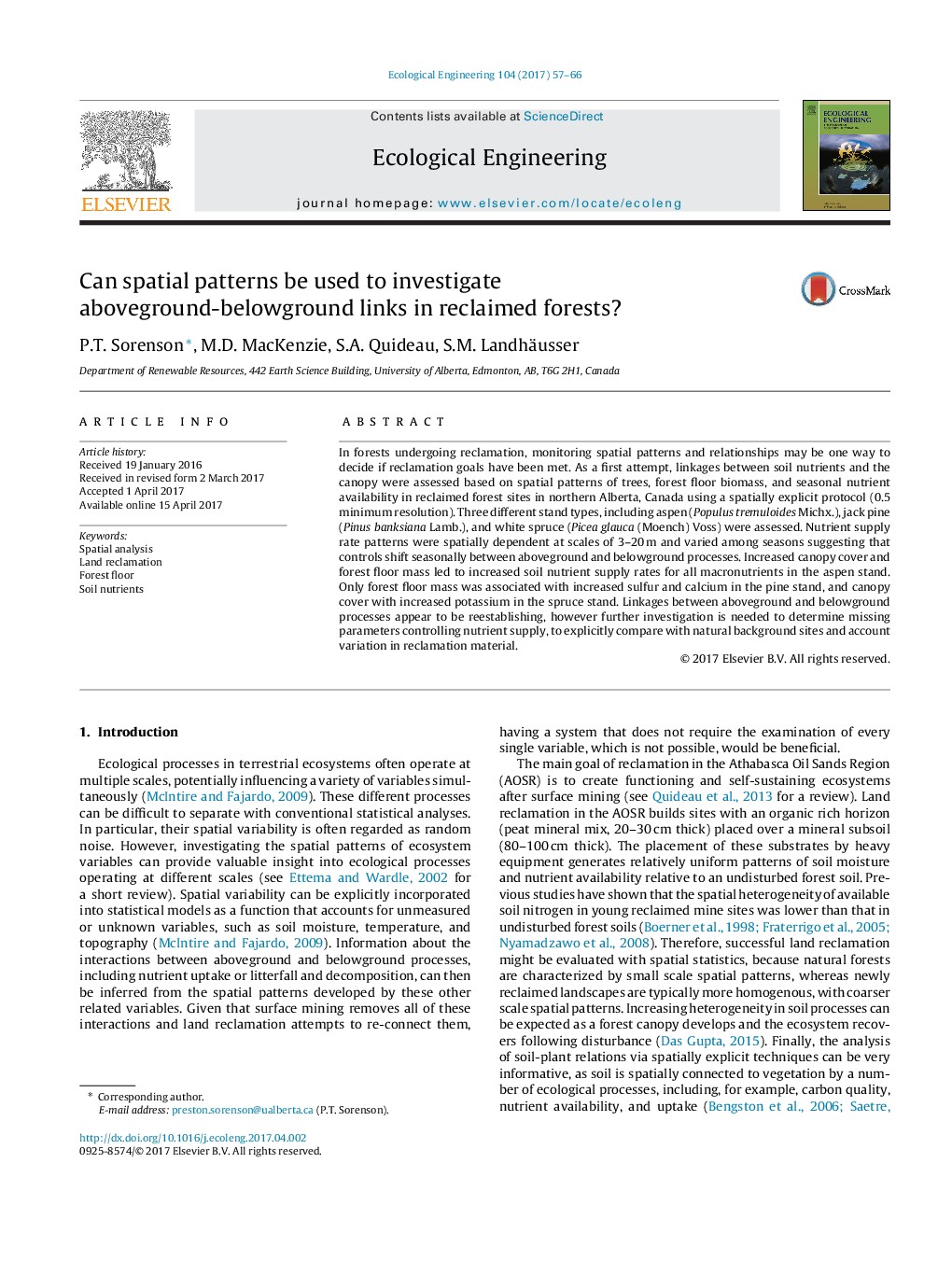| Article ID | Journal | Published Year | Pages | File Type |
|---|---|---|---|---|
| 5743946 | Ecological Engineering | 2017 | 10 Pages |
In forests undergoing reclamation, monitoring spatial patterns and relationships may be one way to decide if reclamation goals have been met. As a first attempt, linkages between soil nutrients and the canopy were assessed based on spatial patterns of trees, forest floor biomass, and seasonal nutrient availability in reclaimed forest sites in northern Alberta, Canada using a spatially explicit protocol (0.5 minimum resolution). Three different stand types, including aspen (Populus tremuloides Michx.), jack pine (Pinus banksiana Lamb.), and white spruce (Picea glauca (Moench) Voss) were assessed. Nutrient supply rate patterns were spatially dependent at scales of 3-20Â m and varied among seasons suggesting that controls shift seasonally between aboveground and belowground processes. Increased canopy cover and forest floor mass led to increased soil nutrient supply rates for all macronutrients in the aspen stand. Only forest floor mass was associated with increased sulfur and calcium in the pine stand, and canopy cover with increased potassium in the spruce stand. Linkages between aboveground and belowground processes appear to be reestablishing, however further investigation is needed to determine missing parameters controlling nutrient supply, to explicitly compare with natural background sites and account variation in reclamation material.
